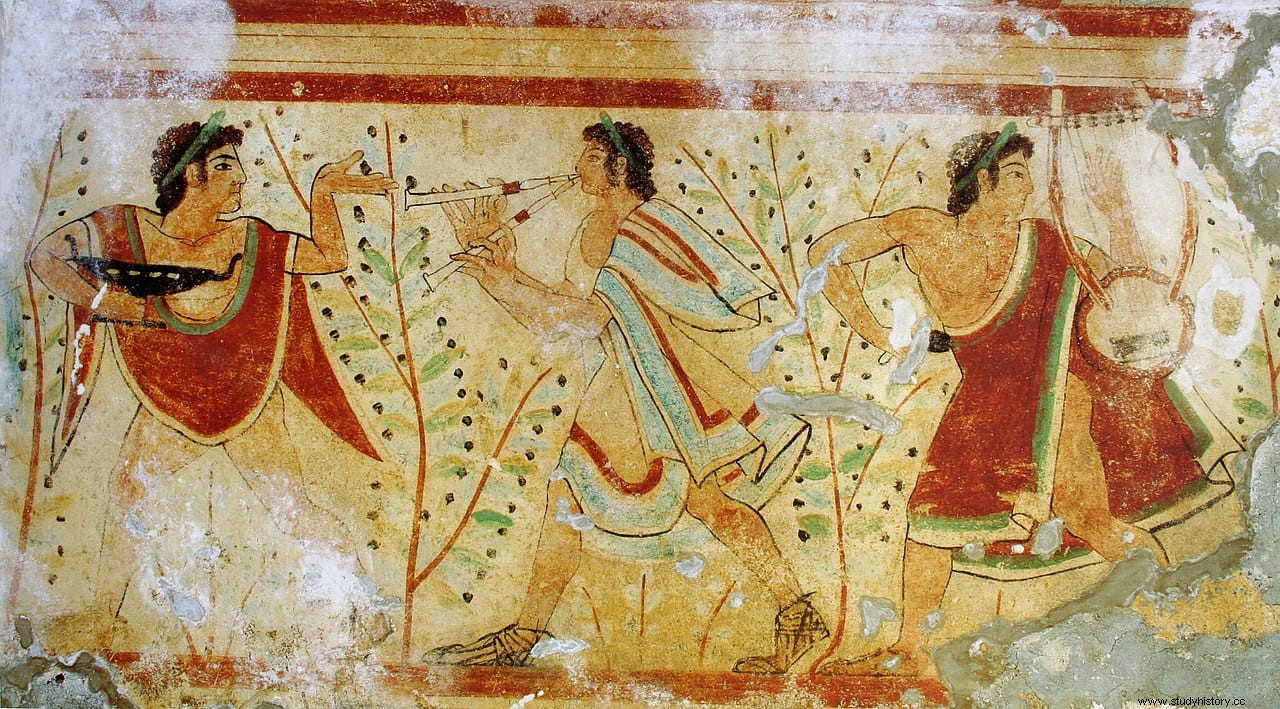The Etruscan civilization, which flourished during the Iron Age in central Italy, has intrigued scholars for millennia. The Etruscans, with their remarkable metallurgical skills and their now-defunct non-Indo-European language, distinguished themselves from their contemporary neighbors, prompting intense debate about their geographical origins by historians such as the Greek Herodotus.
Now, a new study by a team of researchers from Germany, Italy, the US, Denmark and the UK sheds light on the origin and legacy of the enigmatic Etruscans with genome data from 82 ancient individuals from the center and southern Italy, from 800 B.C. until 1000 AD Their results show that the Etruscans, despite their unique cultural expressions, were closely related to their Italic neighbors, and reveal important genetic transformations associated with historical events.
With an extinct language that is only partially known, much of what was initially known about the Etruscan civilization came from the commentaries of later Greek and Roman writers. One of the hypotheses about their origins, the one favored by Herodotus, points to the influence of ancient Greek cultural elements to argue that the Etruscans descended from Anatolian or Aegean migratory groups. Another, advocated by Dionysius of Halicarnassus, proposes that the Etruscans originated and developed locally from the Villanova culture of the Bronze Age and were therefore an autochthonous population.

Although the current consensus among archaeologists supports a local origin for the Etruscans, the lack of ancient DNA from the region has made genetic investigations inconsistent. Using a time transect of ancient genomic information spanning nearly 2,000 years and collected from 12 archaeological sites, the present study resolves lingering questions about Etruscan origins by showing no evidence of recent population movement from Anatolia. . In fact, the Etruscans shared the genetic makeup of the Latins living in nearby Rome, with a large proportion of their genetic makeup coming from steppe-related ancestry that arrived in the region during the Bronze Age.
Considering that steppe-related groups were probably responsible for the spread of Indo-European languages, now spoken worldwide by billions of people, the persistence of a non-Indo-European Etruscan language is an intriguing and as yet unexplained phenomenon. which will require further archaeological, historical, linguistic, and genetic research.
This linguistic persistence, combined with genetic turnover, calls into question simple assumptions that genes equal languages and suggests a more complex scenario that may have involved the assimilation of early Italic speakers by the Etruscan-speaking community, possibly during a prolonged period of admixture throughout the second millennium BC , says David Caramelli, a professor at the University of Florence.
Despite a few individuals of Eastern Mediterranean, North African, and Central European origin, the Etruscan-related gene pool remained stable for at least 800 years, spanning the Iron Age and the period of the Roman Republic. However, the study concludes that, during the subsequent Roman imperial period, central Italy underwent large-scale genetic change, the result of mixing with populations from the eastern Mediterranean, which likely included slaves and soldiers moved along the Mediterranean. Roman Empire.

This genetic change clearly shows the role of the Roman Empire in the large-scale displacement of people in a time of increased upward and downward socio-economic and geographic mobility , says Johannes Krause, director of the Max Planck Institute for Evolutionary Anthropology.
By analyzing the most recent High Middle Ages, the researchers identified northern European ancestors who spread across the Italian peninsula after the collapse of the Western Roman Empire. These results suggest that Germanic emigrants, including individuals associated with the newly established Longobard Kingdom, may have left a traceable impact on the genetic landscape of central Italy.
In the Tuscany, Lazio, and Basilicata regions, the ancestry of the population remained largely continuous between early medieval times and the present day, suggesting that the main gene pool of today's central and southern population Italy was largely formed at least 1,000 years ago.
Although more ancient DNA from all over Italy is needed to support the above conclusions, ancestry changes in Tuscany and northern Lazio, similar to those recorded in and around the city of Rome, suggest that historical events from the first millennium AD the Christian era had a great impact on the genetic transformations of much of the Italian peninsula.
The Roman Empire appears to have left a lasting contribution to the genetic profile of southern Europeans, bridging the European and Eastern Mediterranean populations on the genetic map of western Eurasia , says Cosimo Posth, professor at the University of Tübingen and the Senckenberg Center for Human Evolution and Paleoenvironment.
